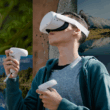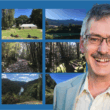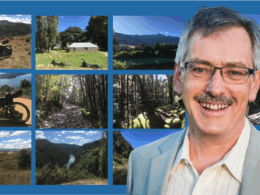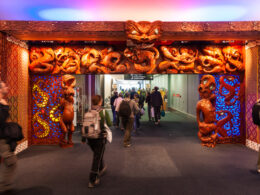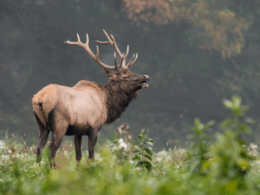Communication technologies are redefining tourism and creating new opportunities to design and deliver immersive and regenerative visitor experiences. Our current research programme is now exploring these possibilities in the South Westland Tai Poutini case study region, and benefiting enormously from a collaborative, co-design research approach.
Transcript
Last week our research team spent time in Franz Josef, in South Westland, including two PhD students from Griffith University who are working with us on our MBIE Endeavour-funded research. This research programme brings together academics working the fields of regenerative tourism, computing and indigenous studies, to explore the rapidly expanding intersection between virtual and augmented reality, and the delivery of innovative visitor experiences.
The worlds of tourism, virtual experiences, online communities and gaming are rapidly converging. This represents a significant reshaping of global tourism as new tech savvy markets emerge, creating the possibility of new markets that didn’t previously exist.
Given these dynamics, it is important to consider how extended reality technologies are redefining tourism. Border closures and periods of lockdown during the COVID pandemic resulted in a huge upswing in interest in online, virtual tourism experiences. Gen Z travellers are now routinely planning their trips through social media — and increasingly, through Generative Artificial Intelligence. That means we need to start thinking differently about the kinds of information available to AI systems to assist potential visitors who may be thinking about and planning future trips.
Traditional marketing campaigns are giving way to new kinds of tourism communication — communications that are targeted, precise, and directly connected to online communities in Aotearoa and around the world. As an example, Tourism NZ recently launched a marketing campaign to coincide with the Minecraft Movie, targeting the global Minecraft community – estimated to be 70 million users. It has essentially launched New Zealand as the first full playable destination in the online world of Minecraft, allowing players to virtually explore a range of iconic New Zealand locations, engage in virtual Aotearoa destination experiences and plan itineraries that can bring their Minecraft adventures to life.
There are also vanguard tourism businesses and organisations in Aotearoa that are casting light on new possibilities. For example Tōka Whānau is a newsocial media platform that offers a ‘digital marae’ for Māori who may be living overseas and physically removed from their marae.
Our Endeavour research programme is titled ‘He karapitipitinga mariko – Immersive regenerative tourism experiences in Aotearoa’. It explores tourism ‘between worlds’ – namely between the physical and virtual worlds. It is an interdisciplinary project that turns challenges into opportunities, researching and enabling new forms of physical (in person) and virtual (immersive) tourism by creating augmented and extended visitor experiences that are universal and accessible.
At the heart of our research programme are partnerships. The project embeds local iwi, local communities, tourism operators and destination managers, in partnership with world-leading researchers in the fields of tourism, indigenous studies, and virtual and augmented reality technologies. Together, we are researching and developing prototype technologies for advancing a ‘new’ tourism model. The aim is to contribute to the transformation of tourism into more resilient, low-carbon and knowledge-intensive industry with a particular focus on mana whenua and local community aspirations and regional tourism destinations in Aotearoa.
The focus is on novel interactive and immersive live tourism experiences that can be jointly experienced with others regardless of location – by augmenting the experiences of manuhiri who are physically visiting tourism sites, and by providing the opportunity for virtual experiences that can be shared with remote visitors who are not physically present at the site of the visitor experience.
In doing so, our research programme also aims to addresses tourism’s systemic issues – issues that were confronting tourism and reaching crisis point before the pandemic. During the COVID pause it was recognised that post-pandemic tourism must be more sustainable and resilient, while limiting and reversing damage caused to Aotearoa’s cultural and natural heritage and their kaitiaki.
And that’s really at the core of this project. Our research aims to address issues of access and equity, and help tackle some of tourism’s long-standing challenges which, until now have been either largely unquestioned or filed away in the ‘too hard’ basket. We now have new opportunities to explode our historically most problematic barriers to international tourism…. barriers such as:
1. The tyranny of distance: Aotearoa New Zealand is the most distant global destination. Distance has always been the major barrier to visiting either because of the monetary cost, the physical demands of long haul travel, lack of time and – in more recent times – flight shame. Virtual technologies can make experiences of Aotearoa ‘closer’ so that while remaining physically distant from our key markets we can become the most accessible place on Earth if experienced virtually.
2: The tyranny of inequity: Tourism is a privilege. Visiting Aotearoa is a privilege that is available to a tiny minority of the global tourism market (let alone those who are excluded from global tourism). We can make ourselves available to those who will never physically visit due to age related mobility barriers, physical disability, income/cost constraints and work barriers. In this sense we can become the most equitable destination on Earth, offering experiences to visitors far beyond those who are able to physically travel to Aotearoa.
3: The tyranny of high carbon: With distance comes carbon. 50% of global aviation emissions come from 1% of the global population. Aotearoa is currently one of the most high carbon destinations globally. But through virtual and augmented experiences we can become a destination of low carbon hybrid in-person experiences, and zero-carbon virtual experiences, and become a global pioneer of low carbon experiences.
In our research programme we respond to these three tyrannies with possibilities that lie between the physical/in person and virtual worlds, with a specific focus on the rapidly expanding intersection between in-situ and ex-situ tourist experiences and virtual social worlds.
Last week, our research team took these ideas into the field. We visited South Westland – which is one of our case study regions – to engaging with our research partners. For our research programme we have adopted a Living Lab methodology.
The Living Lab approach is all about collaboration and co-creation. It is a way of bringing together research and innovation, learning from real-world contexts, and developing solutions that can be applied beyond the lab itself. It is built on principles such as user engagement, trust, shared goals, and co-design. It’s about creating a space for learning, experimentation, and innovation.
In our sessions last week, we started to explore some big questions. What do these new immersive technologies mean for the visitor experience — both physical and virtual? How can they support existing and new emerging tourism markets, in ways that create regenerative tourism outcomes that reflect local community aspirations? And what kind of support is needed from regional and national tourism organisations and agencies to make this transition possible?
Spending time in Franz Josef, engaging with people who are passionate about the future of tourism in South Westland, and exploring the possibilities that innovative approaches may offer was an enriching experiencing. It reminded me that regenerative tourism is not just an academic concept — but it is an evolving approach to tourism that requires trust in collaboration between a range of local and regional stakeholders. Academic research is limited by approaches that focus on academic publication. In tourism, academic research is immeasurably enriched when working in real world contexts, with real world research partners – to achieve measurable, real world outcomes.
****
Extended reality technologies offer to potential to open up extraordinary new dimensions of the visitor experience. However, they can be seen as both an opportunity and a threat. The greatest perceived threat is that the rise of virtual experiences might replace in-person tourist experiences. But our focus is on new kinds of interactive and immersive experiences — experiences that can be shared with others, no matter where they are. It is not about replacing tourism; it is about complementing and enhancing it – to deliver virtual and augmented experiences are additional to tourism. Important questions also arise regarding authenticity or experiences, ownership and data sovereignty. As well as researching visitor experiences, our project is investigating these system wide issues that arise when considering tourism between worlds.
Over the coming months, He Karapitipitinga Mariko will continue to explore how local communities and regional destinations in Aotearoa can lead the world in immersive and regenerative tourism experiences that exist in and between the physical and virtual worlds. Further insights and updates will be provided in podcasts next year as our project advances.
References
- Tōka Whānau: New social media platform a ‘digital marae’ for Māori. RNZ 12 August 2025 https://www.rnz.co.nz/news/te-manu-korihi/569664/new-social-media-platform-a-digital-marae-for-maori
- Tourism New Zealand (2025). Tourism New Zealand launches world-first destination New Zealand Minecraft world to attract visitors. https://www.tourismnewzealand.com/news-and-activity/tourism-new-zealand-launches-world-first-destination-new-zealand-minecraft-world-to-attract-visitors/
